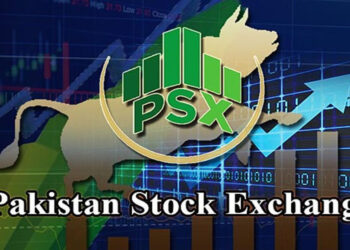Now economists are speculating that the 21st century is destined to become the “Asian Century”. Much of that growth can be attributed to the continent’s rising population of middle-class consumers. Asia, home to more than half of the world’s population, will soon house half of its middle class. The term “Asian Century” should be more than just an economic concept. The concept of the “Asian Century” is often considered as an era of economic prosperity in Asia. China and India were the world’s largest economies in 1870. However, China was humiliated by Western countries and Japan, and India became a colony of Britain at the time. This negative experience leads us to the more comprehensive definition of the “Asian Century”, which is an era in Asia that enjoys economic, political, and social preponderance without enormous conflicts. Considering China’s rapidly increasing economic potential, the possibility of the “Chinese Century” will also be explored. Based on the above definition, the “Asian Century” has not been attained yet. In the nineteenth century, the world was Europeanized. In the twentieth century, it was Americanized. Now, it is being Asianized much faster than you may think. Today, the region has an increasing global share of trade, capital, people, knowledge, transport, culture, and resources. Of eight types of global cross-border flows, only waste is flowing in the opposite direction, reflecting the decision by China and other Asian countries to reduce imports of garbage from developed countries. Asia’s rise has been swift. Home to more than half of the world’s population, the region has climbed from low- to middle-income status within a single generation. By 2040, it is likely to generate more than 50% of world GDP, and could account for nearly 40% of global consumption.
Creating an Asia-led or China-led international order is imperative for Asia to realize “Asian Century”. In terms of the economic aspect, though China and India have been expanding their economy in the US-led liberal international order, as the ADB points out, whether they will overcome the possible middle- income trap is uncertain unless they create their own international order to preclude the hindrance. Moreover, creating their own international order will be instrumental in boosting the Asian economy in the long run without heavily relying on US assistance, which might be suspended due to a possible political conflict. Furthermore, the US-led international order prevents China from achieving political preponderance. China and Asia, as a whole, have internal obstacles to the achievement of the new Asia-led international order, which is necessary to the realization of the “Asian Century”. As of June 2019, the US is 6.38 times higher than China in terms of GDP (nominal) per capita. The fact that China still has numerous poor citizens in rural areas showcases that the country does not have a capacity to create its own international order. Second, in terms of coercion, China also falls behind the US. Chinese military expenditures are currently four times lower than that of the US. Nor does the third aspect of power, attraction, give China a favorable position. Covering about 30% of Earth’s total land area with 4.6 billion people (60% of the world’s population), Asia is the largest and most populated continent. Today, the region has an increasing global share of trade, capital, people, knowledge, transport, culture, and resources. Of eight types of global cross-border flows, only waste is flowing in the opposite direction, reflecting the decision by China and other Asian countries to reduce imports of garbage from developed countries. Asia now accounts for around one-third of global trade in goods, up from about a quarter ten years ago. Over roughly the same period, its share of global airline travelers has risen from 33% to 40%, and its share of capital flows has increased from 13% to 23%. Those flows have fueled growth in Asia’s cities. The region is home to 21 of the world’s 30 largest, and four of the ten most visited. And some of Asia’s lesser-known cities are now also on investors’ radar. In Yangon, Myanmar’s commercial capital, green field foreign direct investment in knowledge-intensive sectors totaled $2.6 billion in 2017, up from virtually zero in 2007.
Around 60% of Asian countries’ total trade in goods occurs within the region, facilitated by increasingly integrated Asian supply chains. Intraregional funding and investment flows are also increasing, with more than 70% of Asian startup funding coming from within the region. Flows of people 74% of travel within Asia is undertaken by Asians help to integrate the region as well. Asian countries also have many conflicts rooted in territorial and historical issues. China and India, the two most populous and geographically expansive states, still have unsettled borders and territorial disputes. The relationship between Japan and South Korea, two neighboring countries, has also suffered, owing to contradictory understandings of historical events. These ongoing disputes will make the creation of the Asia-led international order unlikely. Thus, unless these internal issues are resolved, the region cannot achieve an Asia-led or China-led international order, which is vital for the realization of “Asian Century”. We are not entering an Asian Century because Asia lacks a decisive requisite for “Asian Century”, which is an Asia-led international order in which states, both in and out of Asia, cooperate and benefit economically, politically, and militarily. Asia has been unable to create such an international order due to both internal and external factors. Thus, Asia or China would not rule the world in the foreseeable future.
Although Asia has been and will probably be expanding its total economic size, the “Asian Century”, is now improbable because the region lacks the foundations to realize the Asia-led or China-led order, which I argued, is essential for the realization of the “Asian Century”. Internal obstacles within Asia and China, combined with American strengths, are further hindering the realization of the “Asian Century”. This essay has assumed that China needs to be a revisionist if the country seeks to accomplish its “Century”. Yet, it is still unclear whether Asia or China really wants to achieve its “Century” or maintain the status quo.



























